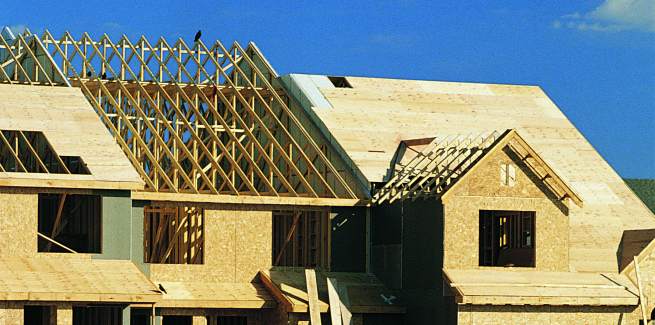According to the Australian Bureau of Statistics latest data, there were 14,908 approved dwellings across the country during the month of April – over two-thirds (10,077) of which were houses.
Compared to March, these latest figures marked a 2.4 per cent decrease in approved buildings, with this decline driven by a 6.1 per cent fall in non-house dwellings, such as units, town houses and apartments.
This drop is the latest ebb and flow in approved dwellings for the year. In January, figures were reported to be at their lowest in 18 months.
This trend flipped during February, with confirmed constructions rising by 43.5 per cent before dipping during March, collapsing by almost one-fifth (18.5 per cent).
But these latest results also marked a distinct fall in the year to April this year, with approved dwellings collapsing by 32.4 per cent over the 12-month period.
This decline was observed fairly evenly across the types of dwellings, with houses dropping by 33.7 per cent and dwellings excluding houses decreasing by 28.7 per cent.
Data released by AMP, which utilises Macrobond figures, also concluded that over April, approved dwellings dropped by 2.4 per cent over the month and 32.4 per cent over the year.
According to a statement from AMP senior economist Diana Mousina, the industry consensus was that April would see a lift in approvals of 2 per cent, based on lending indicators.
Ms Mousina later commented that building approvals and residential construction activity are “expected to trend lower over coming months” due to rising interest rates and construction declines in the wake of HomeBuilder.
Ms Mousina added that worker and material shortages, alongside “a big pipeline of construction activity from high demand in 2021”, could also combine to result in a “shallower decline in construction activity”.
Speaking to Mortgage Business in January, ANZ senior economist Adelaide Timbrell speculated that rising interest rates and HomeBuilder could combine to result in decreased approved dwellings.
However, others have suggested that these latest results are a slight distortion to the current status of the Australian housing market.
Speaking to Mortgage Business, Housing Industry Association economist Thomas Devitt said: “The reality is that approvals for detached houses are still very elevated compared to what they were pre COVID-19, even though they’ve come down from those HomeBuilder heights.”
Citing internal HIA data, Mr Devitt commented that the housing industry body is “seeing no signs that this demand for new homes is slowing”, despite rising interest rates and supply constraints across the country.
According to Mr Devitt, this suggests that the pipeline of residential construction will be stretched out much longer than usual, “which means the adverse effects of high interest rates will actually be pushed further out”.
“When industry rates start rising, there’s generally about a six-month period to when you start seeing the depressing impact on home building,” Mr Devitt said.
“But now, given all of [these factors]...that could extend out to potentially 18 months.”
A report released by the National Housing Finance and Investment Corporation earlier this year noted that these recent lags in construction, coupled with lacking supply, were a key factor in Australia’s rising house prices.
“Given it can take more than six years to get new housing supply to market in some years in some areas, pulling back on development decisions now will exacerbate affordability problems in future years when population growth is expected to return to more normal levels,” the report stated.
“If housing authorities actively slow or impede the flow of new housing supply, it can exacerbate upward pressure on rents and prices, something that should be avoided if improved housing affordability is a primary objective.”
[Related: Dwelling build approvals collapse over January]
 ;
;